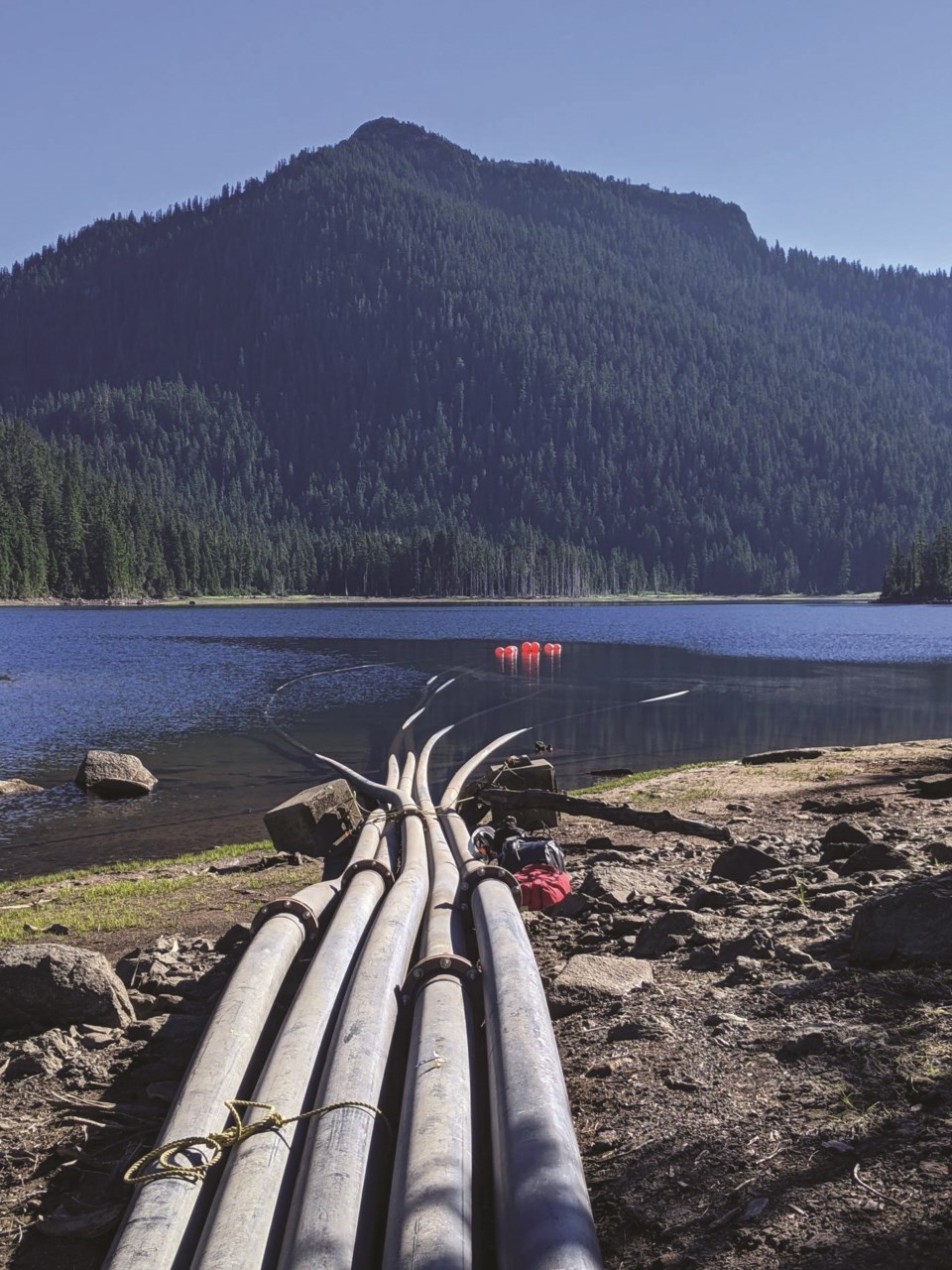With more dry and hot weather in the forecast for the Sunshine Coast, regional district staff predict water on the Chapman system could run out by mid to late September.
Due to the low water levels in Chapman Lake, the Sunshine Coast Regional District (SCRD) activated siphons on Aug. 17 and is preparing for an emergency response in case the water supply runs out.
“For our Chapman system, I don’t expect it to happen until mid to late September and the timing of that really depends on demand from the community, the amount of rain we might get between now and then, as well as … the amount of dew,” general manager of infrastructure services, Remko Rosenboom, said at a special board meeting on Aug. 16.
The monthly water update reported the Chapman system requires several days with 25 millimetres of rain to replenish the supply, which is not currently in the forecast.
Any reduction of water use by the community, Rosenboom said, will reduce the risk of the water supply not being able to meet the demand.
Currently, daily water use on the Chapman system is about 13,500 cubic metres of water – down from 16,964 in Stage 3. Ideally, the use would be similar to the winter rate of about 10,000 cubic metres per day. Rosenboom acknowledged there are seasonal residents and tourists in the summer season, so more people are using the water. The goal for water use, he said, is closer to 12,000 cubic metres per day.
Emergency measures
The SCRD has about a month to prepare for any emergency measures, Rosenboom said. An emergency operations centre would have to be activated before the SCRD calls a state of emergency.
Among the measures being considered:
• The SCRD may establish a bulk water delivery system in Langdale for residents and businesses.
• Water treatment at Trout Lake could be activated, since it used to be an intake source and much of the infrastructure is still there. If water is used from Trout Lake, Rosenboom said it is likely Vancouver Coastal Health (VCH) will require the SCRD to limit public access to the lake. The benefit, he added, would not be significant since the licence limits how much water can be used to about 0.2 million litres a day.
• The SCRD could request additional water supply from the Town of Gibsons, and could further reduce demand by implementing targeted restrictions such as on commercial indoor use.
• For the separate Eastbourne system, which is also on Stage 4, the SCRD could barge tanks of water from Langdale.
Sechelt director Alton Toth asked whether the SCRD could partner with private residential wells on a temporary emergency basis. Staff said they have been contacted by some well owners. If the infrastructure connection can be made, and those wells are licensed, a permit and permission would be required from VCH, as well as monitoring, and the SCRD should be able to work with the province to expand usage, Rosenboom said.
“Especially toward late September, water is water,” he said, adding interested residents and businesses with private wells can contact the SCRD.
Siphons
To meet current requirements, siphons were activated at Chapman Lake on Aug. 17 after water levels became too low for the valve, Rosenboom said in an interview. The five siphons will use suction to draw about 200 litres per second from the lake and release it at the bottom of the dam, replacing what would otherwise be provided through the valve.
Since Chapman Lake is in Tetrahedron Provincial Park, a permit to siphon water during Stage 4 only is required from BC Parks as well as the provincial government. A permit from the Ministry of Forests, Lands, Natural Resource Operations and Rural Development (FLNRORD) has been extended until late August 2023. Although the permit from BC Parks expires at the end of this year, the SCRD has already applied for an extension.
SCRD staff will have to check the system daily to make sure the siphons are working and report as required by the permits. Staff will either fly in via helicopter or hike the approximately 18-kilometre round-trip.
Infrastructure
Both Chaster and Gray Creek wells are operating at capacity, Rosenboom said.
The proposed Church Road well field is now estimated to come online by the end of 2022, although Rosenboom said he hopes to meet the summer of 2022 deadline. Staff met with the province and the Squamish Nation about two weeks ago and another meeting is expected shortly.
According to FLNRORD, the province has prioritized the review of municipal water licence applications on the Sunshine Coast. The technical assessment of the Church Road well licence application is “near the final stage, and consultation with Squamish Nation is ongoing,” a ministry spokesperson said via email on Aug. 16.
A Langdale well development project is currently being tendered, with an anticipated timeline of 2024.
Behaviour changes
The SCRD continues to ask residents to change their behaviour regarding water use, and is now stressing the importance of conserving water indoors (although restrictions do not currently cover indoor use).
“We are in a crisis situation,” SCRD chair and Halfmoon Bay director Lori Pratt said. “We have gotten water greedy in this country. This is not an infinite resource.
“We need to … treat water as the precious resource that it is going forward.”



